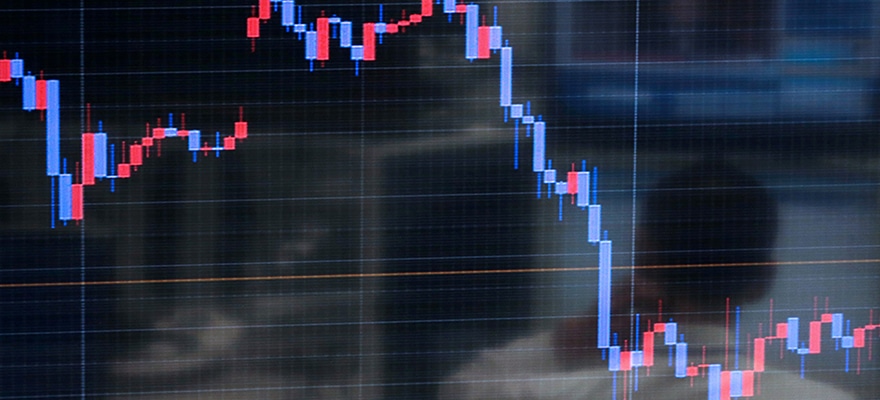Trader and author Raghee Horner of Interbank FX talks about the concept of choosing the right trades.
Lets face it, everyone has their own idea of what to trade, everyone has their own criteria, different people are going long and short at the same time, how do we know who is right and who is wrong. Are both sets of traders wrong, or are both sets of traders right? It’s actually similar to what we see concerning what to eat nowaday; in the sense that we’re constantly bombarded with the experts telling us what to eat and what not to.
Similarly in Forex , we’re bombarded with the “experts”, note the quotation marks, telling us what to trade and what not to. The difference is however, there is now a consensus on which foods are good for us and which are not. There isn’t however, any such consensus in Forex Trading .
Raghee comments: “You can’t open up a magazine and not see “Eat This, Not That” - so FOOD selection has gotten easier but what about TRADE selection? Often there will be two trade entries setting up almost simultaneously. There are two situations to contend with. First is the easier “one thing leads to another” where the trend and subsequent entry on usually a shorter time frame chart will lead to an entry on the larger time frame. The second, and more difficult, is when two set ups are triggering in different directions on the same pair.”
The issue with trading of course, is the fact that someone will be going long, and another will be going short at the same time. Some will have better risk:reward factors than others. Do we trade with the trend or trade against it? Do we use price action and indicators and fibonacci and EMAs and wave theories, etc... Do we trade lower timeframes and if so, do we look at what the higher timeframe is telling us? As you can see and are fully aware, there are so many different permutations that a trader has to contend with.
Raghee continues: “There are certain risk/reward decisions traders make when they select a time frame to analyze and perhaps trade. Market cycles are at the heart of market psychology or what I call external psychology. While internal psychology is dealing with my own mind and reactions, external psychology is what the market is trying to communicate to me. Most succinctly, my job is to get my internal psychology quieted down enough so that I can hear the message of the market.”
Raghee then further explores this concept by using an example from the EUR/USD. You can check that out here:
https://www.ibfx.com/Corporate/post/2010/04/20/e2809cTrade-This-Not-Thate2809d-A-discussion-of-trade-selection.aspx
Trader and author Raghee Horner of Interbank FX talks about the concept of choosing the right trades.
Lets face it, everyone has their own idea of what to trade, everyone has their own criteria, different people are going long and short at the same time, how do we know who is right and who is wrong. Are both sets of traders wrong, or are both sets of traders right? It’s actually similar to what we see concerning what to eat nowaday; in the sense that we’re constantly bombarded with the experts telling us what to eat and what not to.
Similarly in Forex , we’re bombarded with the “experts”, note the quotation marks, telling us what to trade and what not to. The difference is however, there is now a consensus on which foods are good for us and which are not. There isn’t however, any such consensus in Forex Trading .
Raghee comments: “You can’t open up a magazine and not see “Eat This, Not That” - so FOOD selection has gotten easier but what about TRADE selection? Often there will be two trade entries setting up almost simultaneously. There are two situations to contend with. First is the easier “one thing leads to another” where the trend and subsequent entry on usually a shorter time frame chart will lead to an entry on the larger time frame. The second, and more difficult, is when two set ups are triggering in different directions on the same pair.”
The issue with trading of course, is the fact that someone will be going long, and another will be going short at the same time. Some will have better risk:reward factors than others. Do we trade with the trend or trade against it? Do we use price action and indicators and fibonacci and EMAs and wave theories, etc... Do we trade lower timeframes and if so, do we look at what the higher timeframe is telling us? As you can see and are fully aware, there are so many different permutations that a trader has to contend with.
Raghee continues: “There are certain risk/reward decisions traders make when they select a time frame to analyze and perhaps trade. Market cycles are at the heart of market psychology or what I call external psychology. While internal psychology is dealing with my own mind and reactions, external psychology is what the market is trying to communicate to me. Most succinctly, my job is to get my internal psychology quieted down enough so that I can hear the message of the market.”
Raghee then further explores this concept by using an example from the EUR/USD. You can check that out here:
https://www.ibfx.com/Corporate/post/2010/04/20/e2809cTrade-This-Not-Thate2809d-A-discussion-of-trade-selection.aspx

















